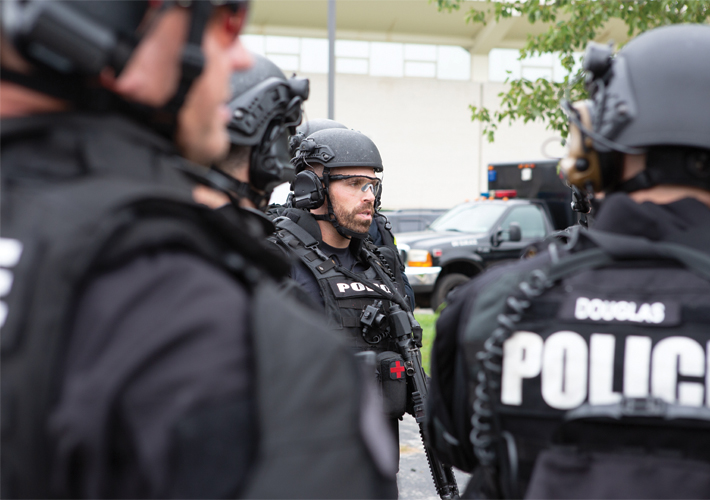Interview: Casandra Robinson on How Standards Contribute to Law Enforcement Safety

Interview: Casandra Robinson on How Standards Contribute to Law Enforcement Safety
In the March/April 2023 issue of Standardization News, Casandra Robinson, physical scientist for the National Institute of Standards and Technology (NIST), spoke to ASTM International about standardization. Robinson previously worked as program manager with the U.S. Department of Energy Savannah River National Laboratory and the National Institute of Justice (NIJ) Standards and Testing Program. She is the chair of the committee on homeland security applications (E54) and a member of the ASTM International Board of Directors. For the interview, she discussed how her background led to her involvement in the standards community, her contributions to search and rescue efforts following the 2001 attacks on the World Trade Center, and the future of law enforcement standards.
Can you tell our readers about your background and how it prepared you for your career?
I graduated from Clemson University as an electrical engineer specializing in power engineering. Before graduating, I had a summer internship with the robotics and remote systems group in what is now the Savannah River National Laboratory at the Savannah River Site in Aiken, SC. My internship experience was so meaningful in terms of mentoring and exciting projects that I decided to work with this group full-time after graduation.
The site is a nuclear facility operated by the Department of Energy, and it historically produced the basic materials used in the fabrication of nuclear weapons. Because nuclear materials processing involves radioactive materials, contamination, and other hazards, there were many areas where people could not go. Work often had to be done remotely using robotics and remotely operated tools. My responsibility was primarily for the video camera systems required for working remotely without line of sight.
In the late 1990s, we began to work with the Department of Justice/National Institute of Justice (DOJ/NIJ) to support local law enforcement with remote-systems work, including concealed video systems for surveillance. When the attacks on the World Trade Center happened in 2001, our team was deployed to Ground Zero with robotics, video systems, and other remotely-operated tools to support the Fire Department of New York and Urban Search and Rescue (USAR) teams as they searched for survivors or remains. We installed pan-tilt-zoom video cameras in high-rise buildings around Ground Zero to enable firefighters to remotely position the view and search through the debris by looking at a video monitor instead of using binoculars. We assembled “pole cameras” that USAR teams could carry into the debris field and extend through small crevices to search inaccessible areas. We also attempted to deploy robots, but the robots of that era could not navigate the terrain.
After working there for over two weeks, NIJ tasked us with performing a study to determine the technology needs of USAR teams, and that study was the impetus for standards-development work for response robots by the committee on homeland security applications (E54). NIJ also requested assignment of detailees to their Standards and Testing Program in the Washington, DC, office for the next few years. That was my first exposure to standards development.
What led you to take an interest in standards? Why are standards important to you?
My NIJ detailee assignment began with working on two NIJ standards, one for ballistic-resistant body armor and another for a chemical-biological-radiological protective ensemble for law-enforcement officers. I learned the importance of standards in assessing and verifying that products do what they are supposed to do.
What do you see as the role of standards in law enforcement/homeland security applications?
The role of standards in these applications is critical for officer safety. Officers are relying on the protective equipment they are given to prevent injury and, in many cases, save their lives. It is our responsibility as standards developers to ensure baseline performance standards are in place and used by manufacturers to verify that equipment performs as expected.
Where do you see future opportunities for the development of law-enforcement standards?
There are many types of equipment used by law-enforcement officers, and each type needs standards. Some anticipated standards in the near term will be for equipment used by public-order police officers, including riot shields and torso/limb protection. As technology advances, new innovations will require new standards.
In addition to standards, a significant opportunity will be in the development of conformity-assessment systems based on standards. Currently, ASTM International has established an ASTM Verification Program for Law Enforcement Equipment that will assess and verify performance of products used by law enforcement and public-safety officers, such as ballistic-resistant helmets and shields, public-order helmets, and metal detectors. The ASTM Verification Program will involve an independent, third-party organization, the Safety Equipment Institute, which will evaluate a product against the appropriate standard. Those products that are successfully verified will be included in an online listing of verified products; will receive authorization to have the ASTM Verification Mark placed on them; and will undergo annual testing to assess continued compliance. We expect that the ASTM Verification Program will continue to expand and encompass many types of law-enforcement equipment.
In your eyes, what value does ASTM bring to the areas you work in and to standards development in general?
ASTM is one of many standards-development organizations whose process is based on the principles of consensus, openness, balance, and due process. These principles ensure that interested parties can participate, voice their individual perspectives, and work together to develop standards that benefit all stakeholders. Through ASTM, we have not only developed much-needed standards but also established the ASTM Verification Program. This verification program will help purchasers and end users to buy and use equipment verified to meet standards.